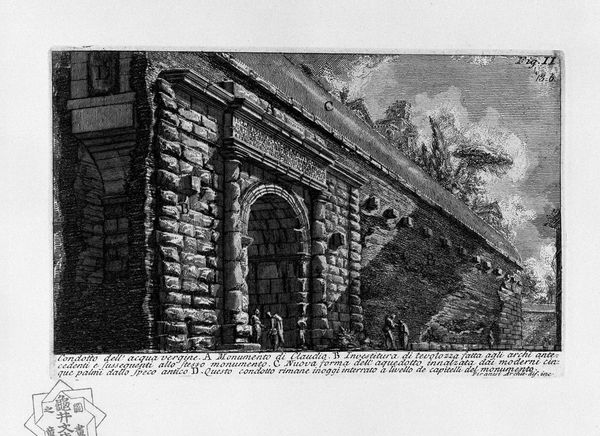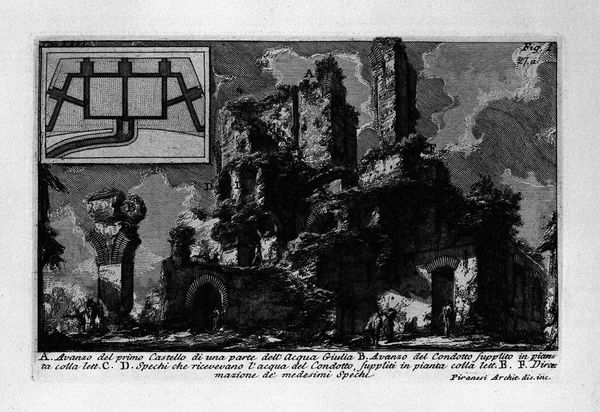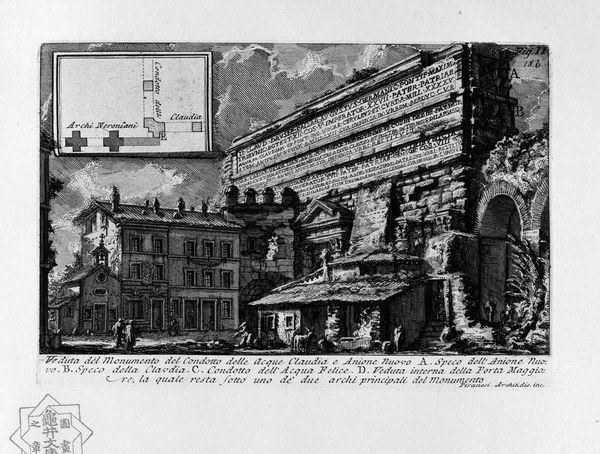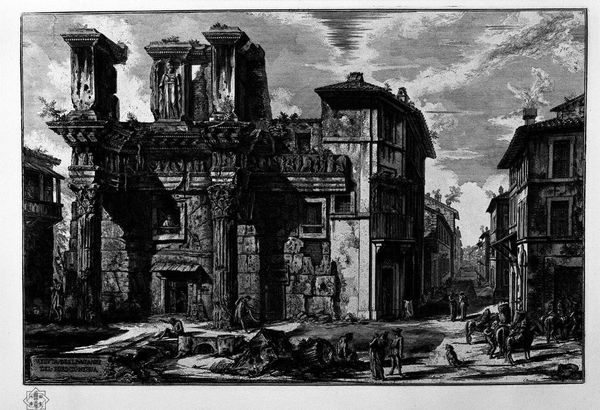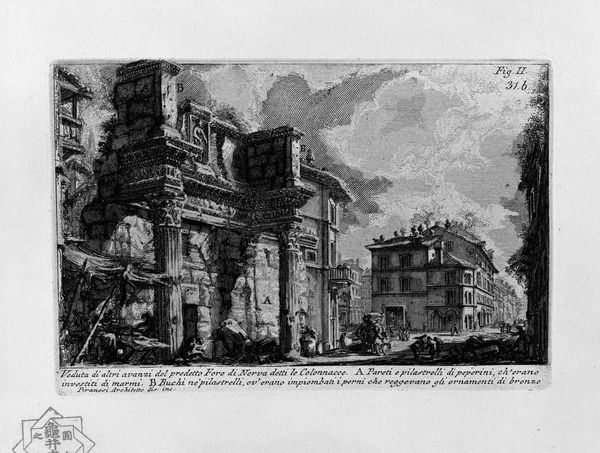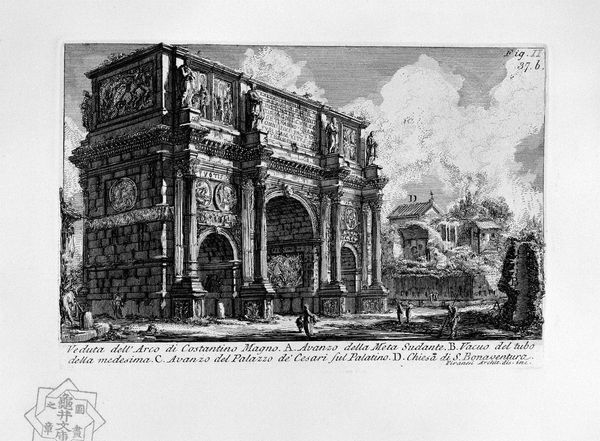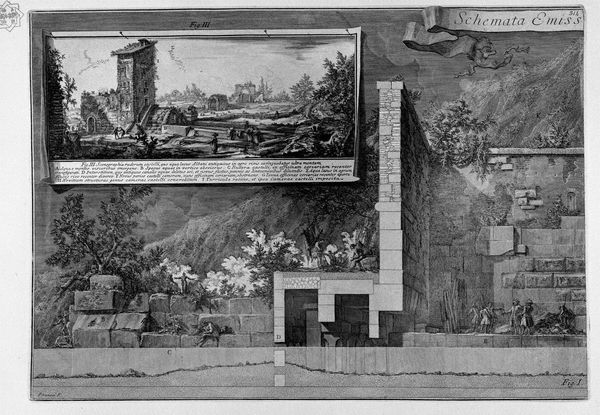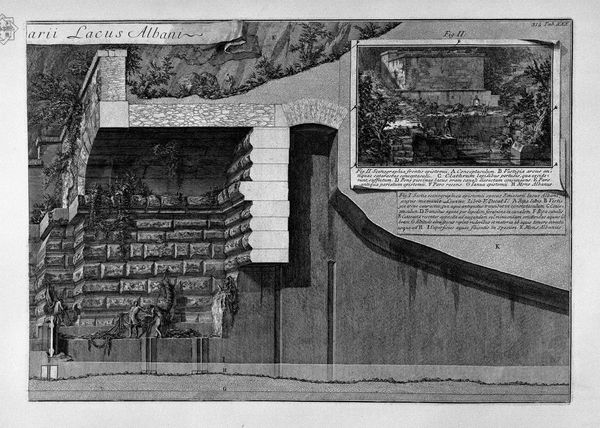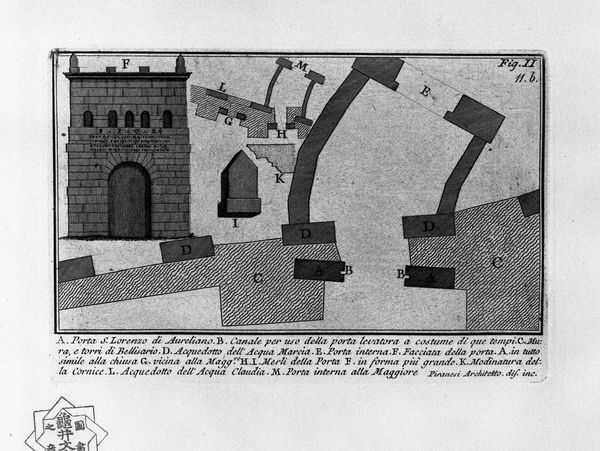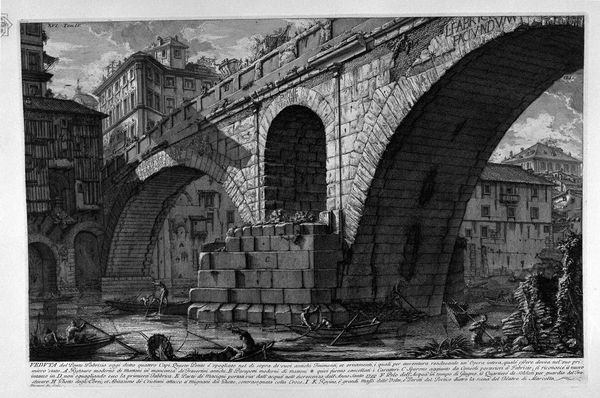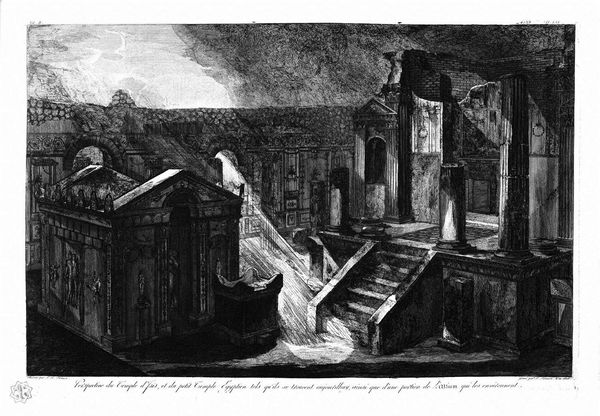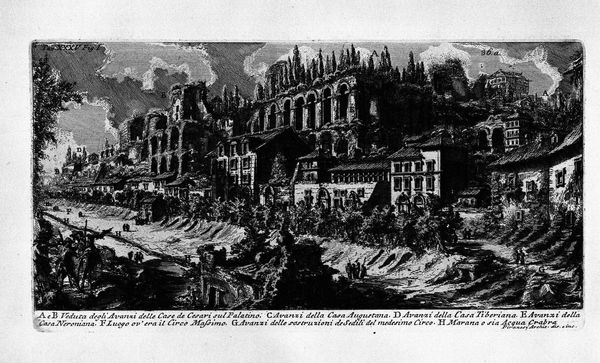
print, etching, engraving, architecture
# print
#
etching
#
perspective
#
form
#
romanesque
#
ancient-mediterranean
#
line
#
cityscape
#
history-painting
#
engraving
#
architecture
Copyright: Public domain
Curator: This is "The Roman Antiquities, t. 1, Plate VIII. Aurelian Walls," an etching and engraving by Giovanni Battista Piranesi from 1756. What strikes you about it? Editor: It’s incredibly detailed. The stark black and white contrasts really highlight the immensity and age of the walls. The perspective emphasizes their imposing nature, almost like a stage set. How would you approach understanding a piece like this? Curator: Well, for me, it begins with understanding the production. Etchings and engravings were not simply about artistic expression; they were crucial for disseminating knowledge about architecture and antiquities in the 18th century. Think about the labor involved – the physical act of creating the plate, the precision required. And consider the social context. Who was commissioning these prints? Who was buying them, and what purpose did they serve? Editor: So you're focusing less on the artistic vision and more on… the supply chain, almost? Curator: Precisely! Think of Piranesi as a producer within a system. He's not just an artist; he's part of a commercial enterprise, responding to a demand for images of Roman grandeur. The materials themselves - the copper, the inks - their availability, their cost, these things shaped what he could create. Were there alternative materials? How did the socio-economic dynamics influence Piranesi’s practice? Editor: That's a fascinating way to look at it. I guess I've always focused on the aesthetics first. I never thought about the cost and labor to produce engravings and distribute those in the mid-1700s. Curator: It allows us to see art as deeply embedded within material conditions. These walls weren’t just sources of visual wonder; they were a source of labor, production, and dissemination of knowledge and identity. What did we learn by viewing it this way? Editor: I see now how focusing on the material conditions and production can unlock so much more about the context and purpose of the artwork. It goes beyond just admiring the image itself. Curator: Exactly! There is materiality within these Roman ruins and within this Piranesi’s production, each informing the other in important ways.
Comments
No comments
Be the first to comment and join the conversation on the ultimate creative platform.
